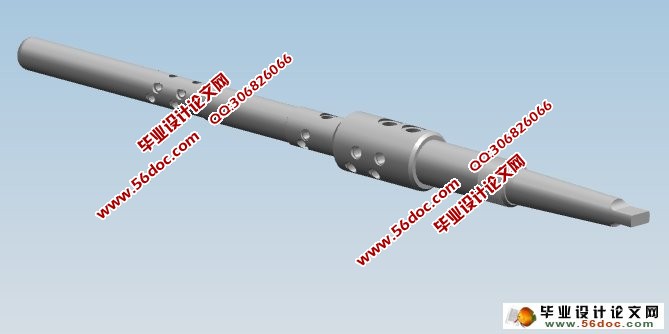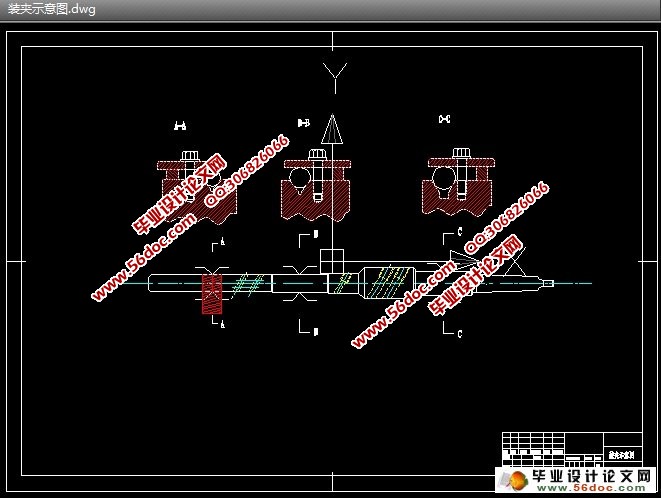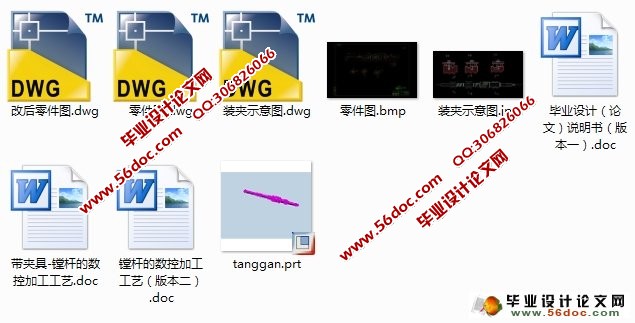镗杆的数控加工工艺及夹具设计(CAD,UG三维)(开题报告,设计说明书10000字,CAD图2张,UG三维图1张)
摘要
轴类零件在整个制造工业中发挥着重要作用。在汽车领域起着连接动力装置和运动装置的部位,在重型机械领域,起着传动动力,吊卸重物的重要组成部分等。阶梯轴作为轴类零件的一种,在整个轴类零件中也扮演着重要角色。
本设计中的零件(镗杆)属于车铣综合型零件,加工难度较大:在车削加工中,该零件属于细长轴,细长轴的加工难度比较大,其特点是刚性较差,轴容易产生弯曲和振动,因此常出现翘曲、锥度过大凸肚竹节、棱形、不圆等状态,最终造成工件不能达到精度和表面粗糙度的要求,本题针对其加工难点,制定出合理的加工方案;在铣削加工中,由于该轴上的孔与轴线存在角度,所以在装夹时存在一定的难度,本设计根据其现状设计出合理的夹具,保证加工的精度要求。
关键词:细长轴、工艺分析、夹具设计、程序编制
Summary
Shaft in the manufacturing industry plays an important role. Serve as a link in the automotive power unit and motor equipment parts, heavy machinery in the field of play drive power, unloading heavy lifting such an important part. Stepped shaft as a shaft in the shaft parts also play an important role.
The design of the parts (Boring Bar) are integrated parts milling, processing more difficult: in the turning process, this part is long and thin shaft, slender shaft of the difficulty of processing relatively large, characterized by less rigid, shaft prone to bending and vibration, so often warp, taper is too large convex belly bamboo, prism, not circular and so the state, eventually leading to the workpiece can not achieve the required accuracy and surface roughness, the title for the processing difficulties, and work out a reasonable processing program; in the milling process, because the axis of the hole and the axis point of view there, so there is some difficulty clamping time, the design of rational design based on its status fixture to ensure the processing precision.
Key words: slender shaft, process analysis, fixture design, programming
目录
摘要 2
目录 4
前言 4
1、零件图样的分析 5
2、确定毛坯 7
3、确定主要表面的加工方法 7
4、确定定位基准 7
5、热处理工序安排 8
6、确定装夹方案 8
6.1 车削装夹方案 8
6.2 铣削装夹方案 9
7.1 车刀的选择 10
7.2 铣削刀具的选择 11
8、切削用量的选择 12
9、机床的选择 13
10、加工顺序的安排 13
11、数控加工程序 14
12、车削中的注意事项 22
13、铣床夹具设计 22
总 结 24
致 谢 26
参考文献 27
附 录 27
|









